Australia’s coastal waters are home to a diverse array of marine life, and while most species are harmless, some can pose potential dangers to snorkellers.
Understanding the risks associated with certain marine life is crucial for those who venture into Australian waters, whether for snorkelling, swimming or other aquatic activities.
Here’s a guide to some of the potentially dangerous sea life in Australia, where it lives, and how to stay safe. Medical advice is provided from St Johns Ambulance Service.
Disclosure: Please Note That Some Links In This Post May Be Affiliate Links, And At No Additional Cost To You, We Earn A Small Commission If You Make A Purchase. Commissions Go Toward Maintaining The Snorkel Spots Website.
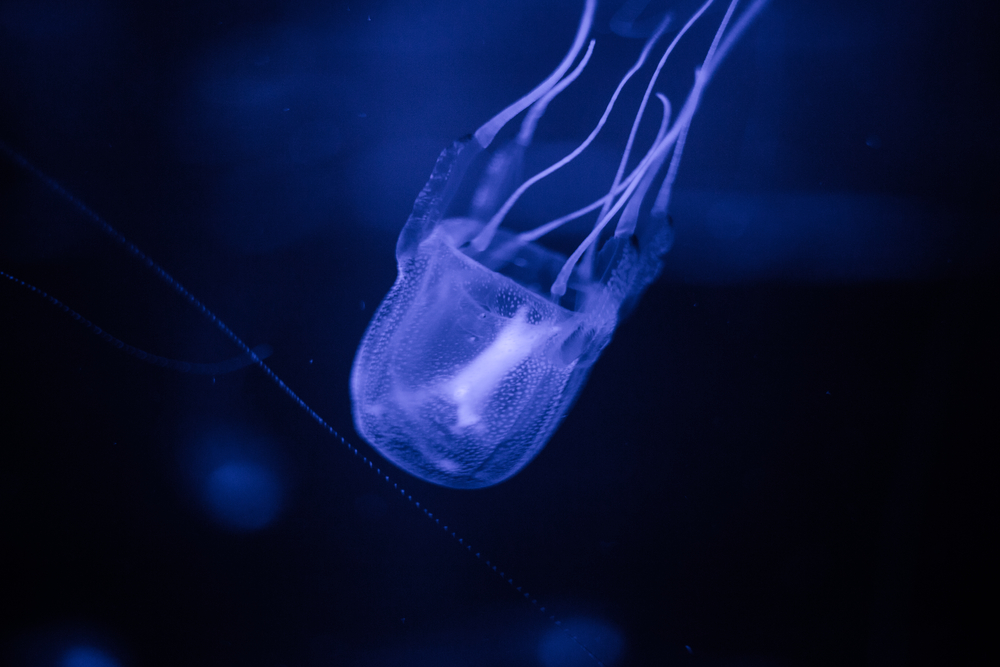
Box Jellyfish
Where are they? Box Jellyfish occur in the northern half of Australia from as far south Geraldton in Western Australia and Bundaberg in Queensland. There are more of them the further north you go. They can be more common around the mouth of creeks and rivers after rain.
Season – Box Jellyfish are most common from November to May but are present year round.
Treatment – Apply generous amounts of vinegar to the affected area for at least 30 seconds. If no vinegar is available, carefully remove any tentacles and rinse with sea water. A cold pack can be applied after vinegar treatment. Call 000 (triple zero) in Australia for urgent medical attention if symptoms are severe.
How to avoid them – Don’t ignore warning signs on beaches in northern Australia and swim where there are lifeguards. Wear a stinger suit if you are swimming in northern Australia from November to the end of April. Avoid river mouths after heavy rain.
While all creatures in nature are special, the box jellyfish is one you should be happy to see in an aquarium. They have claimed more lives than any other jellyfish and according to Australian Geographic are one of the most venomous creatures on the planet.
If one of their 15 three metre long stinging tentacles get you, the venom can cause cardiac arrests. The stinging cells stay active even if the tentacles aren’t attached to the body of the jellyfish. The stings are not activated by synthetic material which is why wearing a stinger suit or wetsuit provides such good protection.
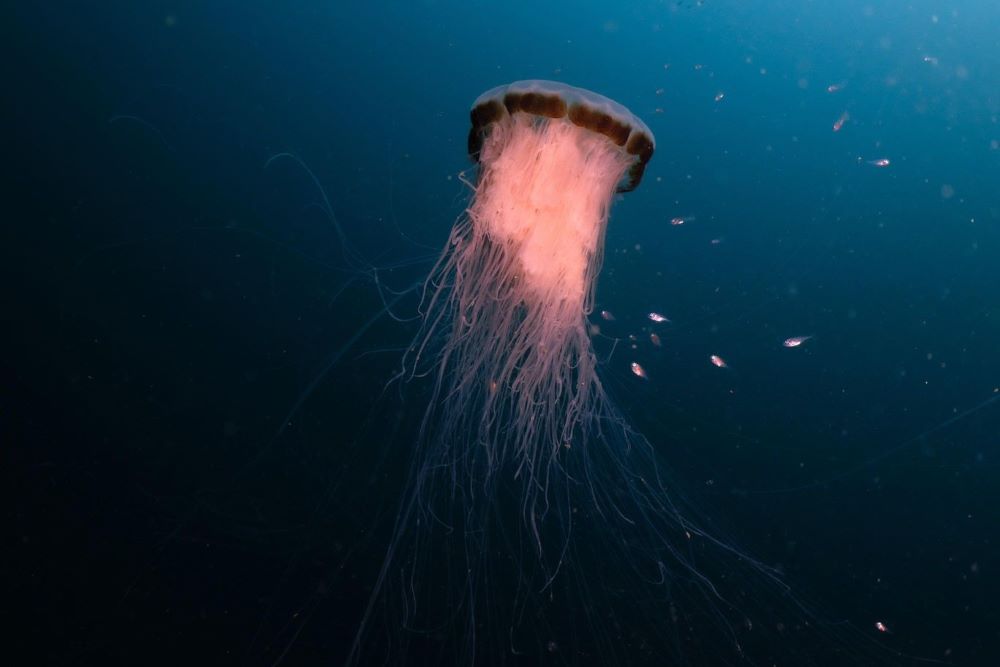
Irukandji Jellyfish
Where are they? Irukandji Jellyfish occur in the northern half of Australia from as far south Geraldton in Western Australia and Bundaberg in Queensland. There are more of them the further north you go. Unlike box jelly fish which are closer to shore, Irukandji are also in deeper water around coral reefs.
Season – November to May
Treatment – Apply generous amounts of vinegar to the affected area for at least 30 seconds. If no vinegar is available, carefully remove any tentacles and rinse with sea water. A cold pack can be applied after vinegar treatment. Call 000 (triple zero) in Australia for urgent medical attention if symptoms are severe.
How to avoid them – Don’t ignore warning signs on beaches in northern Australia and swim where there are lifeguards. Wear a stinger suit if you are swimming in northern Australia from November to the end of April.
Irukandji are a much smaller relative of the box jellyfish. They are only the size of your thumb but don’t let that fool you, they still pack a life threatening punch. Severe headaches and muscle pain, nausea, vomiting are all symptoms of an Irukandji sting.
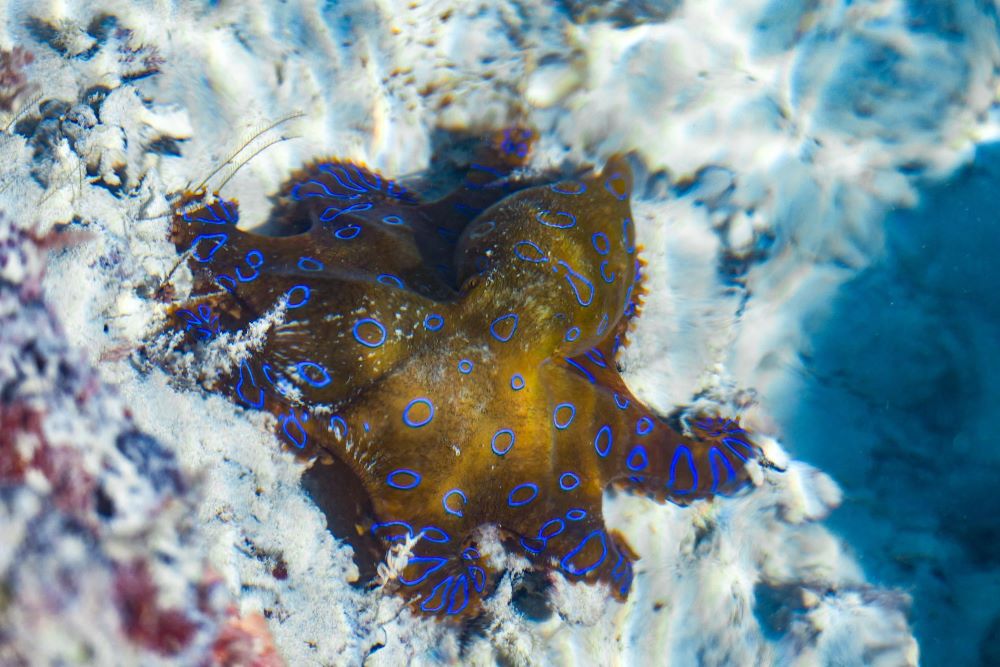
Blue-Ringed Octopus
Where are they? The blue ringed octopus is found in southern Australia from the southern Queensland to New South Wales, Victoria Tasmania, South Australia and southern Western Australia. They live in shallow rock pools and reefs
Season – Blue ringed octopus is present year round
Treatment – Apply a pressure bandage to the affected limb, immobilise the limb, seek medical advice. Call 000 (triple zero) in Australia for urgent medical attention if symptoms are severe.
How to avoid them – Be careful poking around rock pools and picking up shells or rocks from rock pools or shallow reefs.
This pint sized octopus can fit in the palm of your hand – but DO NOT PICK THEM UP! You might not notice the bite from their small beak, but it administers a powerful neurotoxin that can cause numbness around the face, increasing pain, nausea, difficulty swallowing and vomiting.
The blue ringed octopus doesn’t go out of its way to attack humans, but it will bite it feels threatened. The blue rings on its body only appear when it is about to bite.
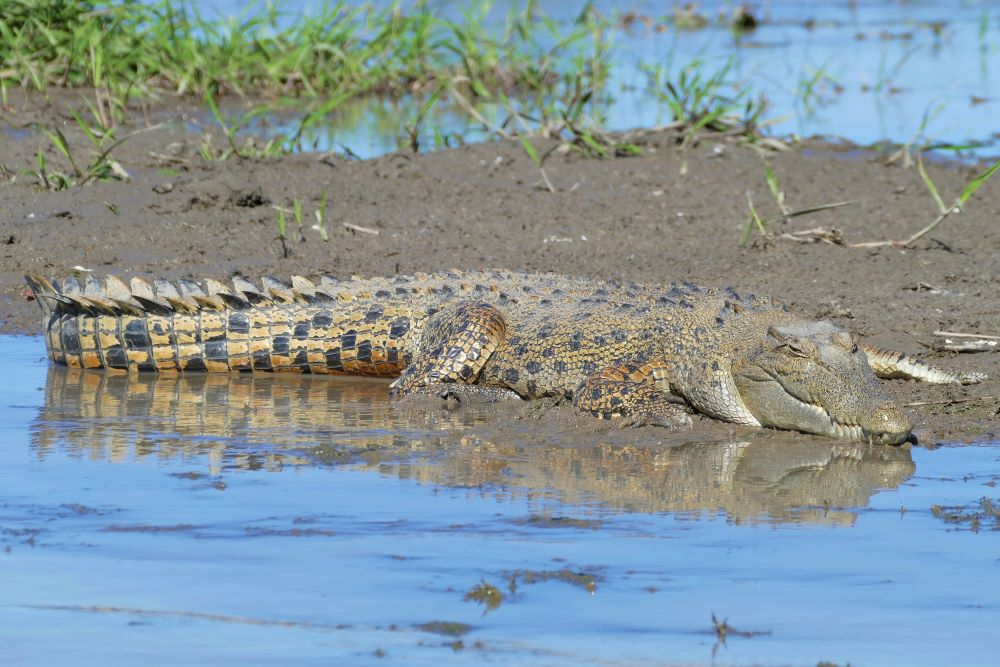
Saltwater Crocodile
Where are they? Coastal waters, rivers and estuaries in Northern Australia between Broome in Western Australia, throughout the Northern Territory and down to Rockhampton in Queensland.
Season – Saltwater crocodiles are present year round
Treatment – Apply bandages to minimise bleeding and call 000 (triple zero) in Australia for urgent medical.
How to avoid them – Observe warning signs around rivers and waterways in Northern Australia. Only swim in crocodile safe waterways in the Northern Territory.
Not much needs to be said about the danger these aggressive predators are to swimmers. Saltwater crocodiles are not sea lions – they don’t come over to you for a curious look. They are only approaching for one reason – dinner. Be ‘croc-wise’ and follow warnings when you are looking for a swimming spot in Northern Australia. If you do want to cool off around Darwin, try a local pool or Berry Springs.

Sharks
Where are they? Sharks are present all around Australia and in some rivers.
Season – Sharks are present year round
Treatment – Apply bandages to minimise bleeding and call 000 (triple zero) in Australia for urgent medical attention.
How to avoid them – Avoid swimming at dusk and dawn and swimming where there are commercial or recreational fishers. Snorkel with a buddy, swim or snorkel in patrolled areas, snorkel in netted areas, use a personal shark deterrent.
The world’s most dangerous sharks are all present around Australia however encounters are rare. Fortunately, if you plan to snorkel on the Great Barrier Reef or Ningaloo Reef, you are unlikely to see them. More care should be taken if snorkelling in more exposed areas and it pays to stay up to date with shark alerts for the area you are in.
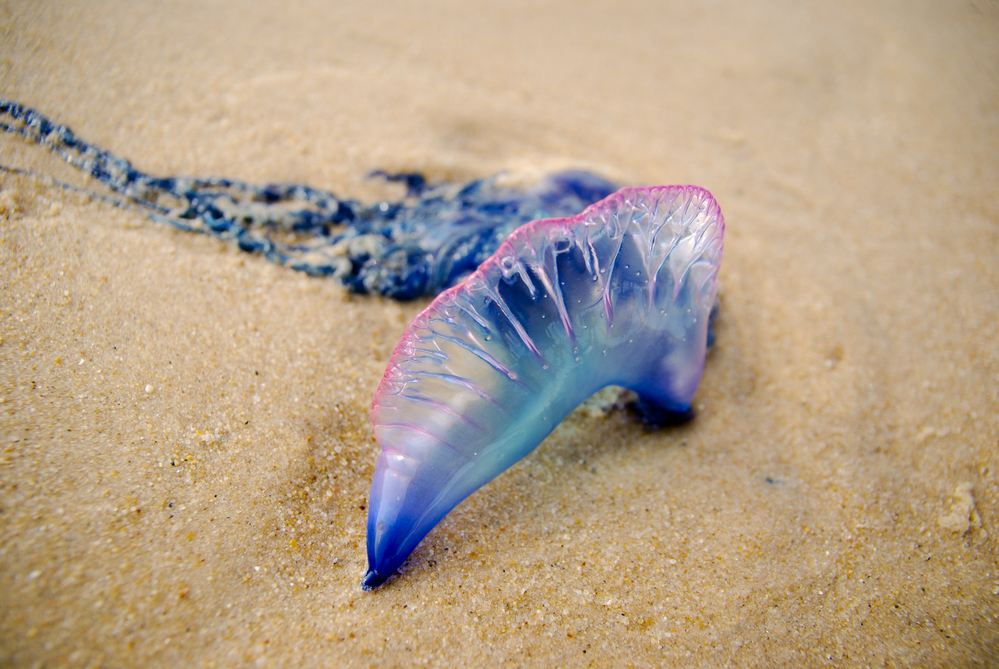
Bluebottle Jellyfish
Where are they? Mainly east coast of Australia in summer. They also occur in Southwest Western Australia but in much smaller numbers.
Season – Summer and especially when there are onshore winds (winds that blow from sea towards the land) and an incoming tide.
Treatment – Immerse the affected area in hot water or hot shower (but not so hot it burns) for 20 minutes, if pain does not improve repeat. Call 000 (triple zero) in Australia for urgent medical attention if symptoms are severe.
How to avoid them – Swim at patrolled beaches and beware aware of warning signs, avoid the beach if the wind is coming off the water, wear a stinger suit or rash top.
Bluebottle jellyfish, also known as Portuguese Man-of-War, are common in Australian waters in warmer months. While their tentacles can deliver painful stings, they are generally not life-threatening. They tend to turn up in great numbers on certain days in the right conditions. When this happens, look for signs on the beach.
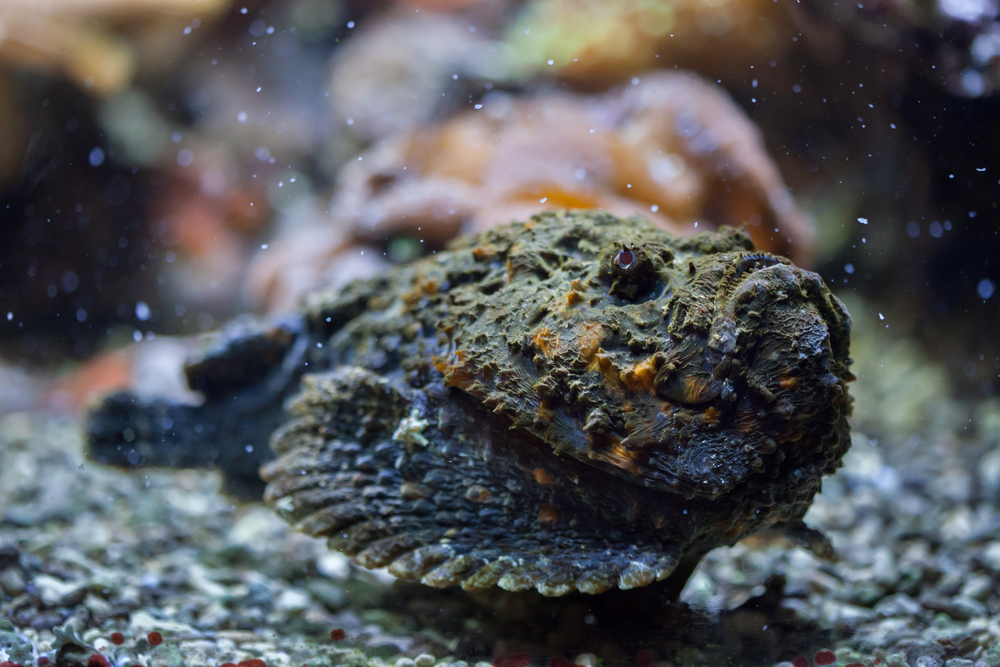
Stonefish
Where are they? Northern half of Australia from Geraldton in Western Australia to the Queensland – New South Border. Stonefish live in shallow coastal waters, rivers and estuaries.
Season – Stonefish are present year round
Treatment – Immerse the affected area in hot water or hot shower (but not so hot it burns) for 20 minutes, if pain does not improve repeat. Call 000 (triple zero) in Australia for urgent medical attention if symptoms are severe.
How to avoid them – Wear reef shoes in shallow water. Check at local visitor centres if there are areas where stonefish are known to occur. Don’t step on or pick up something that looks like a football sized rock.
Stonefish have venomous spines on their dorsal fin which can cause a painful sting, swelling, tissue damage, and even cardiac symptoms. Stonefish have an amazing ability to camouflage among rocks and sand. Victims usually have accidental encounters with them as they sit motionless in the sand waiting for their prey.
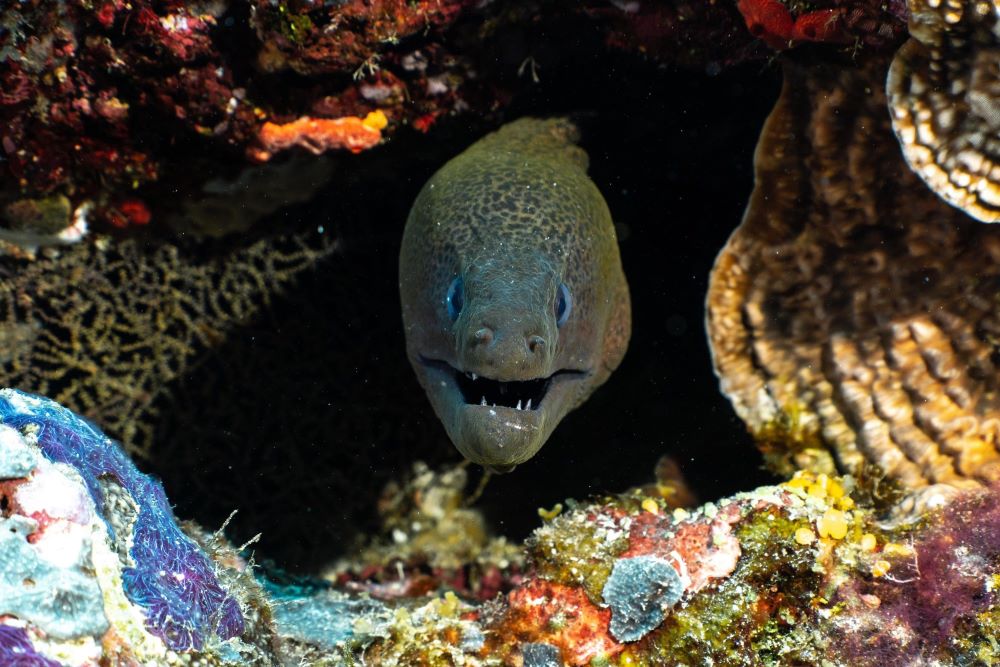
Other Marine Creatures to aware of – but don’t let them scare you!
You might have heard of other nasty marine creatures but if you worry about everything in the water that can bite, cut or sting you in the water you would never get in!
The truth is, most dangerous creatures will either stay away from you, are rarely seen or present no risk if you don’t touch them.
Things on this list include:
- Sea snakes – very timid but are rarely seen by swimmers
- Cone snails – one of the most venomous creatures in the sea but they are usually encountered by divers and are not a problem if you don’t pick them up
- Moray Eels – Timid and mostly nocturnal, their nasty bite is only a problem if you threaten their space – don’t touch
- Puffer fish and lionfish – both are venomous but not aggressive – look but don’t touch
- Razorfish – The razor sharp top of these clams stick out of the sand and deliver a bad cut if trodden on. They are rare in popular snorkelling spots; reef shoes reduce the risk.
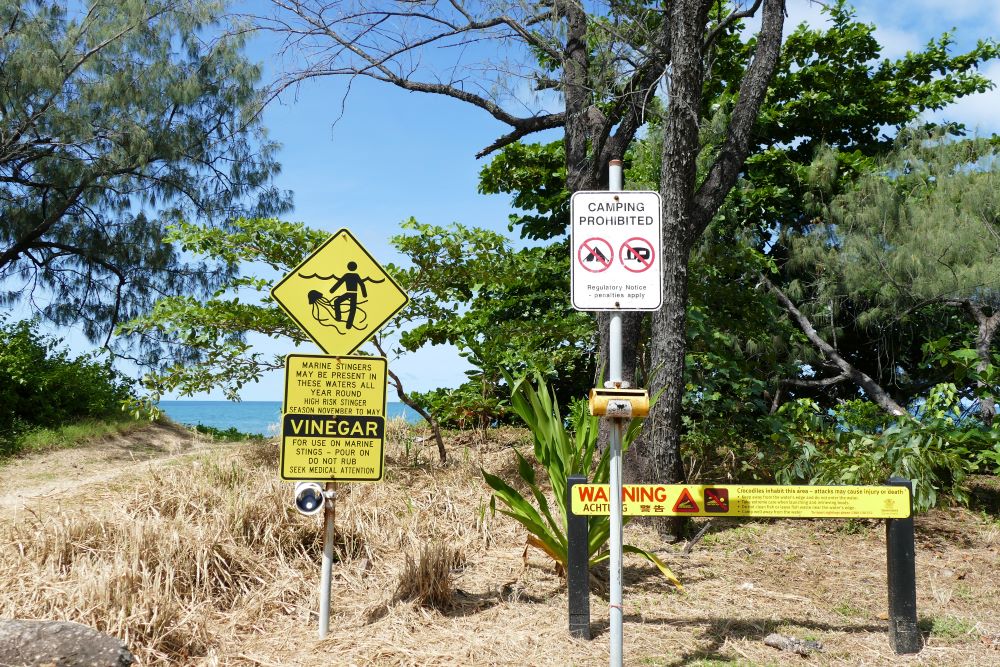
General Tips for Staying Safe from Marine Life in Australia:
Look – don’t touch – A lot of marine life is only dangerous if it feels threatened. So, enjoy looking, but don’t touch or disturb marine life and avoid getting too close or making it feel trapped.
Follow Local Guidelines: Pay attention to warning signs, guidelines, and safety measures provided by local authorities. They are in place to protect both marine life and for human safety.
Wear Protective Gear: Use appropriate protective gear, such as wetsuits, stinger suits or rash guards, to minimize exposure to potential hazards like jellyfish stings. Reef shoes and gloves provide extra protection.
Stay Informed: Stay informed about the marine life present in the area you plan to visit. Local visitor centres and dive operators can provide valuable information about potential risks.
Swim in Designated Areas: Choose designated swimming and snorkelling areas where there are lifeguards or safety measures
- Fun Facts about Sharks - February 15, 2024
- Where can you Safely Swim with Sharks in Australia? - February 15, 2024
- How to Snorkel – 15 Tips for Beginners - February 15, 2024

